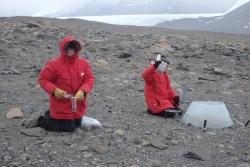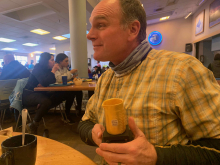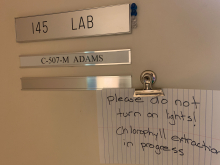Update
In case you missed it, you can view the archive of Bill's live event from Antarctica on 24 January 2023 on the PolarConnect Archives webpage.
What Are They Doing?

The McMurdo Dry Valleys (77°30'S 163°00'E) on the shore of McMurdo Sound, 2,200 miles (3,500 km) due south of New Zealand, form the largest relatively ice-free area (approximately 4,800 sq km) on the Antarctic continent. These ice-free areas of Antarctica display a sharp contrast to most other ecosystems in the world, which exist under far more moderate environmental conditions. The perennially ice-covered lakes, ephemeral streams and extensive areas of exposed soil within the McMurdo Dry Valleys are subject to low temperatures, limited precipitation and salt accumulation. The dry valleys represent a region where life approaches its environmental limits, and is an end-member in the spectrum of environments included in the LTER Network.
The overarching goal of MCM LTER research is to document and understand how ecosystems respond to environmental changes.
Where Are They?

Latest Journals

Byron is an evolutionary ecologist in the Department of Biology at Brigham Young University where he teaches Biology, Molecular Biology, and Evolutionary Biology classes. Byron’s approach to understanding biology involves inferring evolutionary and ecological processes from patterns in nature. His most recent projects involve fieldwork in Antarctica, where he and his colleagues on the McMurdo Long Term Ecological Research project are studying the relationship between biodiversity, ecosystem functioning, and climate change. Byron gets stoked about science education and loves interacting with K-12 students and teachers. When he’s not freezing his butt off in the McMurdo Dry Valleys or southern Transantarctic Mountains, he likes spending time with his family and friends in Utah’s wild places.
Dr. Gooseff's research focuses on the characterization and numerical simulation of hydrologic processes and associated biogeochemical cycling. Much of my past and current research has included simulation of introduced and natural tracer transport. The locations of my research projects include polar regions (arctic Alaska, Antarctica) and continental mountain catchments (H.J. Andrews Experimental Forest, Grand Tetons, etc.).





